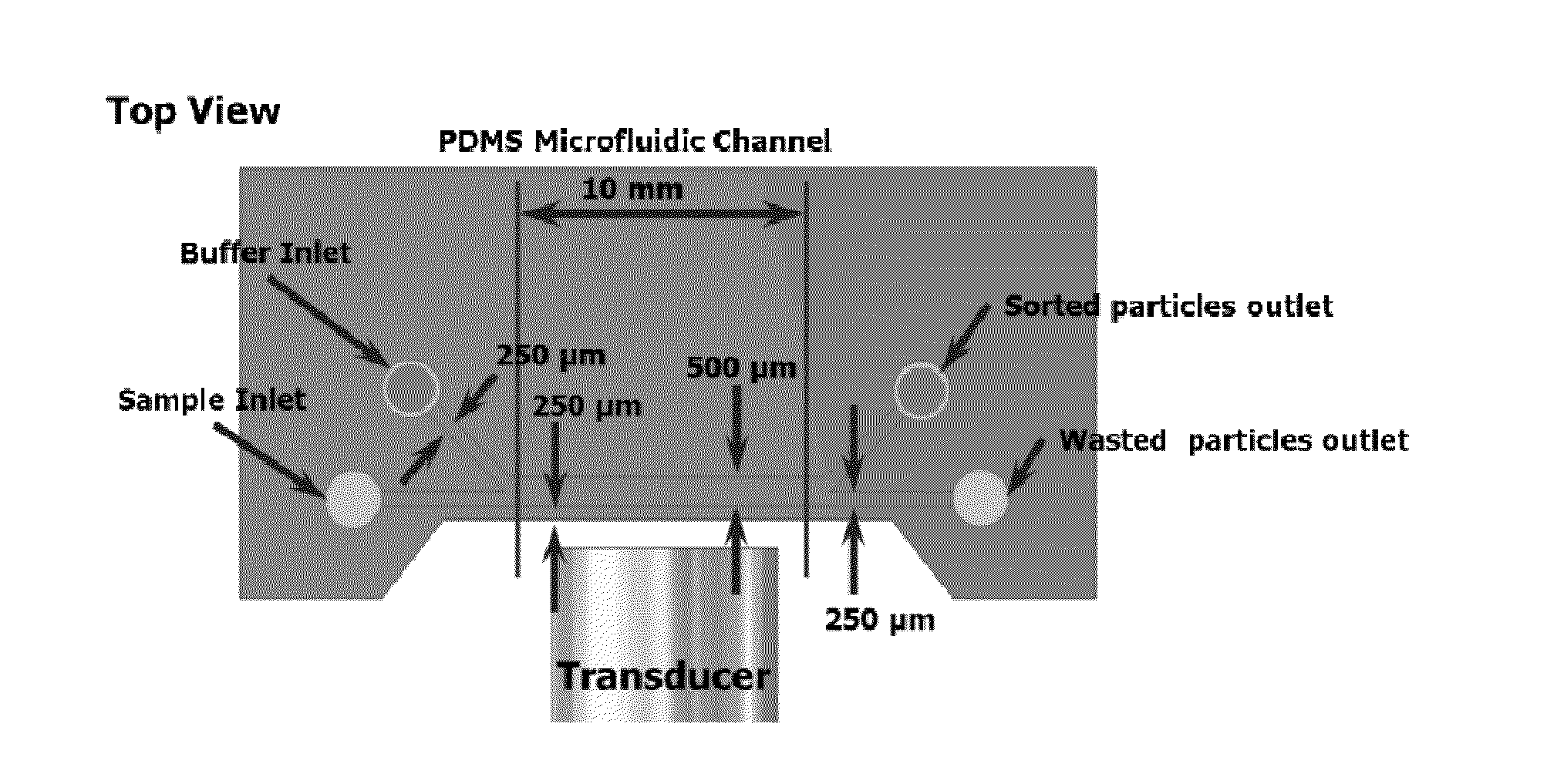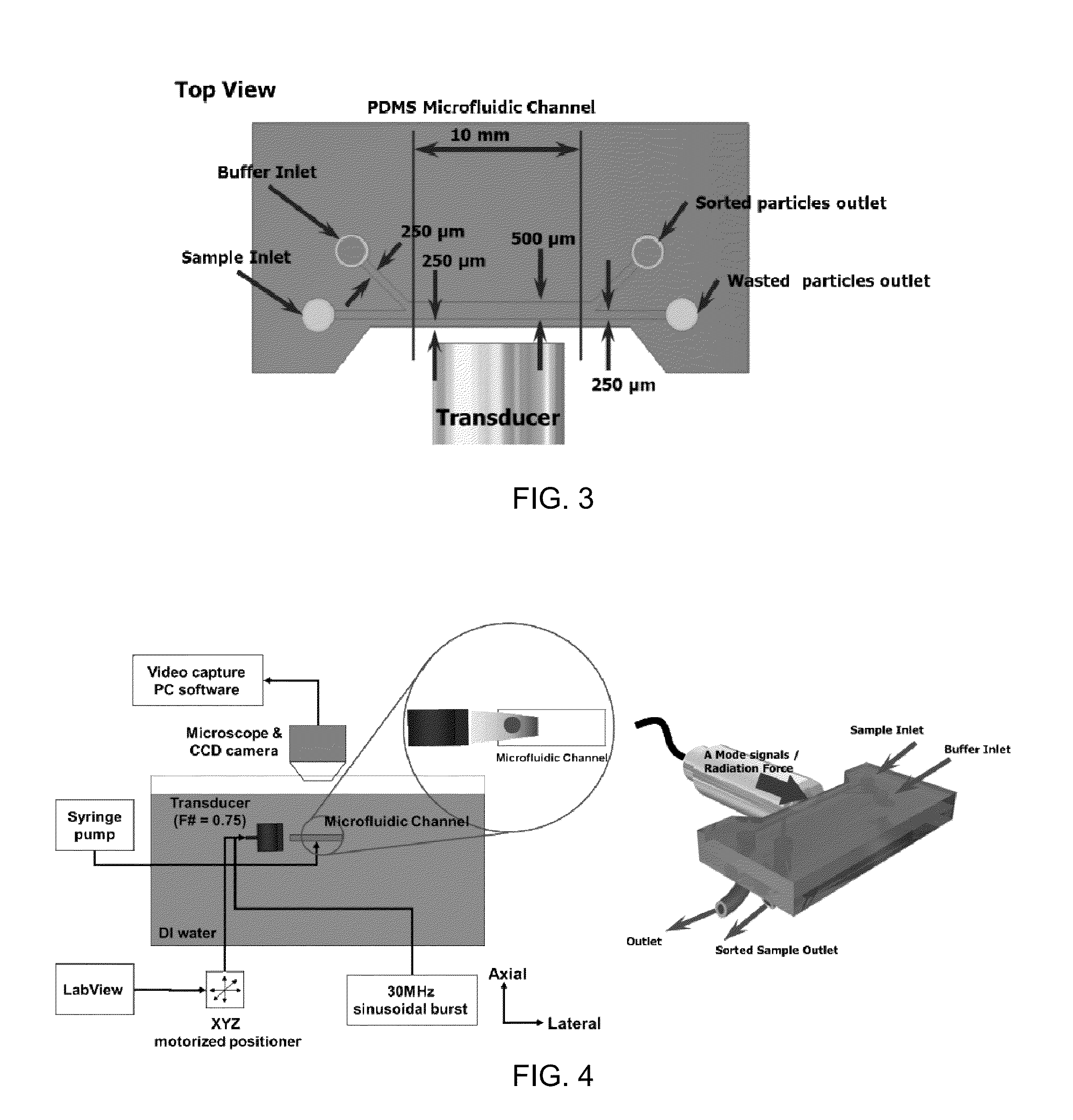Acoustic particle sorting in microfluidic channels
a microfluidic channel and acoustic particle technology, applied in the direction of instruments, porous material analysis, suspensions and porous material analysis, etc., can solve the problems of inability to perform single cell sorting, inability to accurately and accurately sort, and inability to perform acoustic force field formed by standing wave. to achieve the effect of a much simpler sorting process
- Summary
- Abstract
- Description
- Claims
- Application Information
AI Technical Summary
Benefits of technology
Problems solved by technology
Method used
Image
Examples
Embodiment Construction
[0022]Illustrative embodiments are now described. Other embodiments may be used in addition or instead. Details that may be apparent or unnecessary may be omitted to save space or for a more effective presentation. Some embodiments may be practiced with additional components or steps and / or without all of the components or steps that are described.
Current State of Development
[0023]The development of the proposed technology hinges upon the availability of highly focused high frequency ultrasound transducers. It consists of two phases: sensing and sorting. The particle is first discriminated from its nature and then moved or sorted via ultrasonic radiation force to another channel in a microfluidic environment. As a feasibility study, whether the small particles can be detected and characterized by the scattered signals from the individual particles was investigated. A series of experiments were performed to assess the capability and accuracy of distinguishing particle size from analy...
PUM
| Property | Measurement | Unit |
|---|---|---|
| frequencies | aaaaa | aaaaa |
| flow rate | aaaaa | aaaaa |
| width | aaaaa | aaaaa |
Abstract
Description
Claims
Application Information
 Login to View More
Login to View More - R&D
- Intellectual Property
- Life Sciences
- Materials
- Tech Scout
- Unparalleled Data Quality
- Higher Quality Content
- 60% Fewer Hallucinations
Browse by: Latest US Patents, China's latest patents, Technical Efficacy Thesaurus, Application Domain, Technology Topic, Popular Technical Reports.
© 2025 PatSnap. All rights reserved.Legal|Privacy policy|Modern Slavery Act Transparency Statement|Sitemap|About US| Contact US: help@patsnap.com



